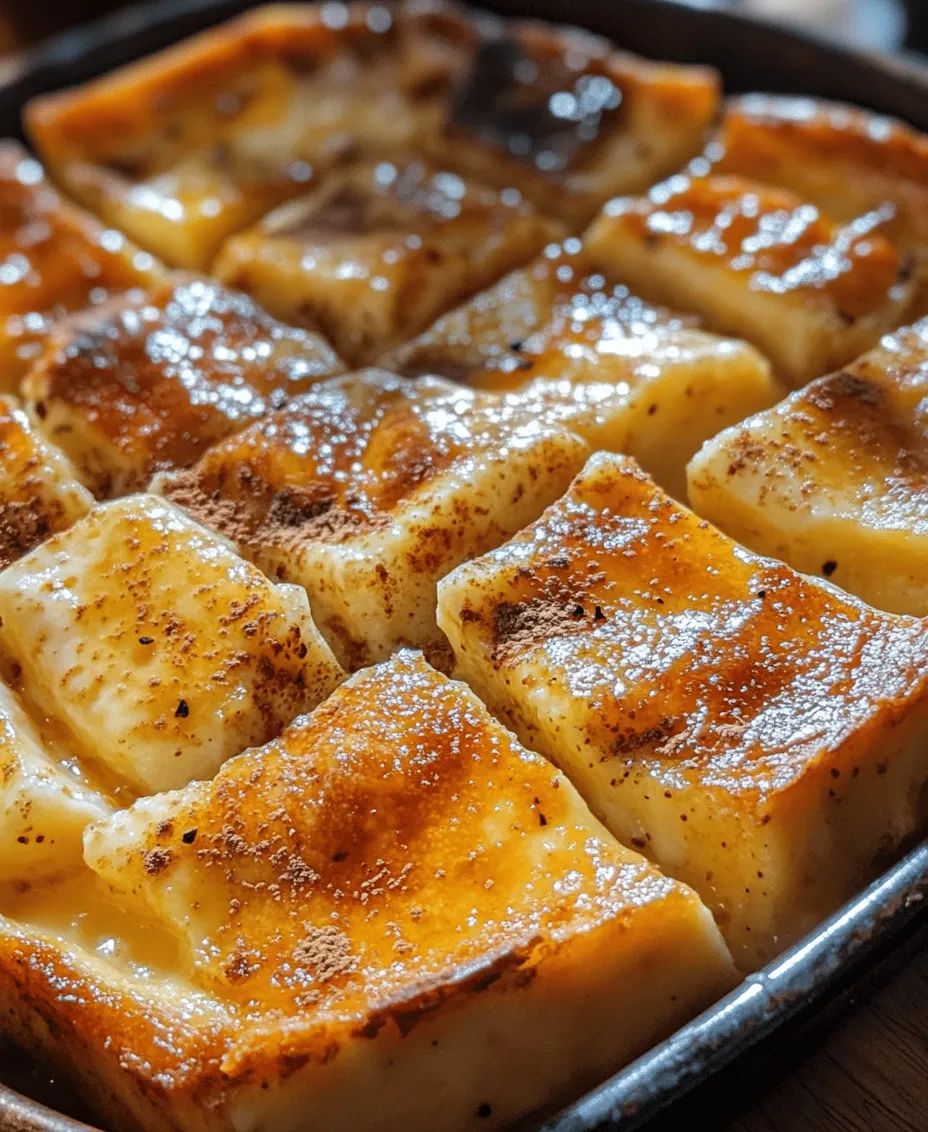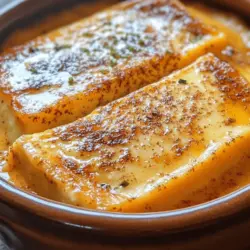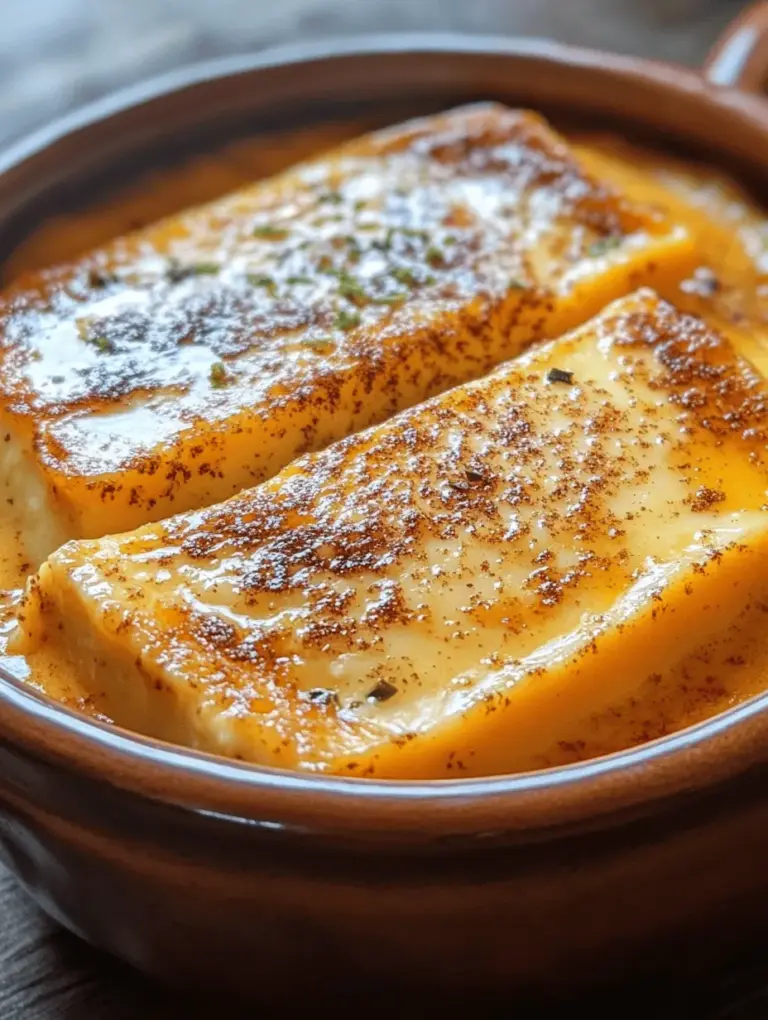Nestled within the heart of Amish cuisine, baked custard stands out as a cherished dessert that evokes warmth and nostalgia. Known for its creamy texture and delicate flavor, this dish is a staple in many Amish households, often served at family gatherings, potlucks, and holiday celebrations. The simplicity of its ingredients combined with the comforting, rich taste makes it a beloved treat for both young and old alike. Whether you grew up enjoying your grandmother’s homemade custard or are discovering it for the first time, this recipe promises to envelop you in a world of comforting flavors and delightful aromas.
Baked custard is more than just a dessert; it’s a slice of history that reflects the Amish community’s values of simplicity and togetherness. The process of preparing this dish often involves family members coming together in the kitchen, sharing stories and laughter as they whisk, pour, and bake. The result is a creamy, luscious custard that has a way of bringing people together, whether around the dinner table or during special occasions.
One of the most appealing aspects of Amish baked custard is its straightforward preparation. This recipe is designed to be accessible for cooks of all skill levels. The ingredients are common pantry staples, making it easy to whip up a batch at a moment’s notice. With just a few simple steps, you can create a delightful dessert that is sure to impress.
Understanding the Ingredients of Amish Baked Custard
To craft the perfect baked custard, understanding the role of each ingredient is essential. Each component plays a significant part in achieving the desired flavor, texture, and structure of the dish. Here’s a closer look at the key ingredients that come together to create this delectable treat:
Eggs
Eggs are the backbone of baked custard, providing both structure and creaminess. They serve as the primary thickening agent, allowing the custard to set properly as it bakes. The proteins in eggs coagulate when heated, giving the custard its silky texture. Additionally, eggs contribute to the rich, custardy flavor that makes this dish so appealing. For the best results, use fresh, high-quality eggs to ensure a superior taste and texture.
Whole Milk
Whole milk is a crucial ingredient in Amish baked custard, contributing to its creamy richness. The fat content in whole milk enhances the custard’s mouthfeel, creating a luxurious and smooth texture. It also balances the sweetness of the sugar, ensuring that the final product is flavorful without being overly sweet. For an even creamier custard, consider using half-and-half or a combination of whole milk and heavy cream.
Granulated Sugar
Sugar is responsible for the sweetness of the custard, striking the perfect balance with the other ingredients. In addition to flavor, sugar plays a role in the texture of the custard. When combined with the eggs and milk, sugar helps to create a smooth, velvety consistency. It is important to gradually add the sugar during preparation to ensure it dissolves fully, resulting in a lump-free custard.
Vanilla Extract
Vanilla extract adds depth and warmth to the flavor profile of baked custard. Its sweet, aromatic qualities enhance the overall taste, making each bite a delightful experience. Using pure vanilla extract is recommended for the best flavor; however, if you don’t have it on hand, imitation vanilla can be a suitable substitute.
Salt
A pinch of salt is often overlooked, but it is vital in elevating the overall flavor of the custard. Salt enhances the sweetness and balances the rich flavors of the eggs and milk. It’s a small addition that makes a significant difference, so don’t skip it!
Ground Nutmeg
Ground nutmeg is a traditional garnish in Amish baked custard, adding a warming, aromatic quality that complements the dish beautifully. Its slightly sweet and nutty flavor pairs well with the creamy custard, providing a hint of spice that makes the dessert even more inviting. A light sprinkle of nutmeg on top before baking not only contributes to the flavor but also adds an appealing visual element.
Butter
While butter is not a primary ingredient in the custard itself, it plays a crucial role in preparing the baking dish. Greasing the dish with butter (or using cooking spray) prevents the custard from sticking and ensures easy serving. Additionally, the buttery flavor can subtly enhance the richness of the custard, contributing to a more indulgent experience.
Step-by-Step Guide to Making Amish Baked Custard
Creating Amish baked custard is a straightforward process that allows for creativity and personal touches. Below, we’ll outline the preparation phase and the initial steps involved in making this comforting dessert.
Preparation Phase
Before diving into mixing your ingredients, it’s essential to set the stage for success. Proper preparation can make a world of difference in the outcome of your custard.
Preheating the Oven
The first step is to preheat your oven to 350°F (175°C). Preheating is crucial for ensuring that your custard cooks evenly. If you place the custard mixture in a cold oven, it may not set properly, resulting in a texture that is either too runny or unevenly cooked. Allowing the oven to reach the proper temperature before placing your custard inside ensures it bakes at the right rate from the start.
Preparing the Baking Dish
While your oven preheats, take a moment to prepare your baking dish. A standard 9-inch pie dish or an 8×8-inch square baking dish works well for this recipe. Grease the dish generously with butter to prevent sticking and make for easy serving. Alternatively, you can use non-stick cooking spray if you prefer. If you’re feeling adventurous, consider sprinkling a tablespoon of sugar on the bottom of the dish after greasing; this will caramelize during baking and create a delightful crust.
Mixing the Ingredients
Once your baking dish is prepared and your oven is preheated, it’s time to mix the ingredients. This step is where the magic begins.
Whisking the Eggs
In a large mixing bowl, crack the eggs and whisk them vigorously. The goal here is to incorporate air into the eggs, which will help create a light and fluffy custard. Whisking until the eggs are fully blended—no streaks of egg white or yolk should remain—is essential for achieving a smooth texture.
Gradually Adding Sugar
Next, gradually add the granulated sugar to the whisked eggs. While whisking, this allows the sugar to dissolve properly, preventing any gritty texture in the final custard. This step is not only about sweetness; it’s also about creating a homogenous mixture that will bake evenly. Continue whisking until the sugar is fully incorporated, and the mixture appears smooth and glossy.
Combining Wet Ingredients
Now it’s time to bring your wet ingredients together. Slowly pour in the whole milk and vanilla extract, continuing to whisk as you do so. This step is crucial for achieving a well-blended custard. Ensure that the milk is at room temperature for the best results, as this will help the mixture come together smoothly. After adding the milk and vanilla, give the mixture a final whisk to ensure everything is evenly combined.
With these foundational steps complete, you’re well on your way to creating a delicious batch of Amish baked custard. Stay tuned for the next sections, where we will delve deeper into the baking process and provide tips for achieving the perfect custard texture.

Creating the Custard Mixture
The foundation of any great custard lies in the careful blending of its ingredients. To achieve the perfect custard texture for your Amish Baked Custard, start by whisking together your eggs and sugar in a large mixing bowl. This step is crucial, as it helps to break down the sugar and incorporate air into the mixture, which contributes to the light, airy texture of the final product. Aim for a smooth, pale mixture.
Next, gradually add in your milk (or cream, depending on your preference) while continuing to whisk. This gentle combination is key; you want to ensure the eggs do not scramble in the process. The milk should be added slowly to allow the mixture to emulsify properly, creating a smooth custard base.
For those looking to add a twist to the traditional recipe, consider incorporating a marbling technique. To achieve this, pour half of the custard mixture into the baking dish, then drizzle in a layer of caramel or chocolate sauce before adding the remaining custard mixture. This not only enhances the visual appeal with swirls of color but also adds a delightful textural contrast that can elevate your dish.
Baking Process
The baking process is where the magic of custard truly happens. One of the most important concepts to understand in baking custard is the water bath, or “bain-marie.” This technique involves placing your custard dish inside a larger baking pan filled with hot water. The water bath provides gentle, even heat, which is crucial for preventing the custard from curdling or cracking during the baking process.
To set up your water bath, preheat your oven to 325°F (160°C). As your oven heats, position your custard dish in a larger pan and fill it with hot water until it reaches halfway up the sides of your custard dish. This method ensures the custard cooks evenly and helps maintain a creamy texture.
Baking times can vary, but generally, you should expect to bake your custard for about 50 to 60 minutes. You’ll know it’s done when the edges are set but the center still has a slight jiggle. Avoid overbaking, as this can lead to a rubbery texture. A toothpick inserted into the center should come out clean or with a few moist crumbs, indicating that your custard is perfectly cooked.
Cooling and Serving
Once your custard is baked to perfection, it’s important to cool it properly to achieve the optimal texture. Remove the custard from the oven and carefully lift it out of the water bath. Allow it to cool in the dish for about 15-20 minutes at room temperature.
After the initial cooling period, cover the dish with plastic wrap and transfer it to the refrigerator. Chilling the custard for at least 2 hours—or overnight—is ideal, as it will help the flavors meld and the texture firm up.
When it comes to serving, the beauty of Amish Baked Custard is its versatility. You can enjoy it warm or chilled, depending on your preference. For a simple yet elegant presentation, slice the custard into squares, dust with a little nutmeg or cinnamon, and serve with a dollop of whipped cream or a scoop of vanilla ice cream. Alternatively, you can present it in individual ramekins for a more personal touch, garnished with fresh

